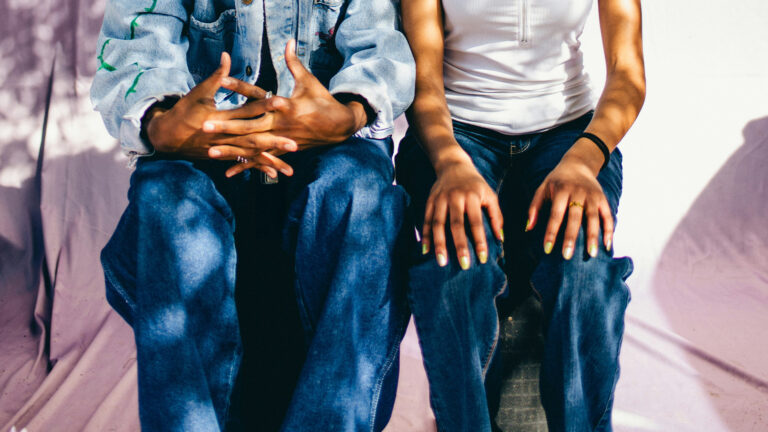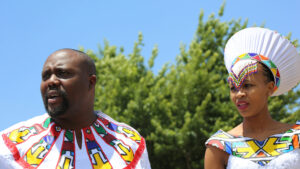Is there hope for children with disabilities? Our small team of therapists drove six hours to a village where we met a person of peace (a Christian from the community able to bring people of different backgrounds together) who had asked us to come and help the children with disabilities in her village. We arrived at the first home. Avoiding the mud, we took off our shoes and entered the small shack. As we approached the bed, we saw a small boy moaning quietly. He had Cerebral Palsy. He had multiple broken bones. The jagged ends of the broken bones showed through his fragile skin.
How did this boy end up in this condition, in so much pain? So many factors may have contributed, such as inadequate medical resources in the village, little access to therapy or information around cerebral palsy and the shame and stigma disability brings to a Muslim family. Was there hope for this child with a disability?
The “Curse” Of A Disability
In this traditionally Muslim community, which is very focused around the ideas of honour and shame, disability is believed to be as a result of a curse, or a punishment from God. The shame for the disability is most often placed on the mother who is believed to have done some evil for God to have punished the child. As a result, the family will often hide the child with a disability from view, even from their neighbours or family members. The curse of a disability means isolation. As well as even basic connection. We had even heard of doctors doing examinations of children with disabilities without touching them. The doctors look, ask, question and prescribe.
One of the first steps we take as therapists is to reach out.
So, one of the first steps we take as therapists is to reach out. We visited two brothers with a rare form of epilepsy. From the age of two they had been getting progressively weaker and more paralysed. After asking permission from their mother, we started therapy. I sat next to him and while holding him gently I showed his mom how to move him into different positions to avoid getting contractures (hardening of tendons and muscles). As a result, his mother was amazed that I would sit with her son and more especially touch and interact with him. As we left the house our hearts were heavy. The hopelessness of the situation weighed on us as these boys were rapidly deteriorating.
Hope With a Disablity
Is there hope for these children with a disability? Yes! Sometimes giving hope looks like reaching out to touch a child with a disability, speaking to and interacting with them and getting onto their level – on the floor or on the bed. We are letting them and their mothers know that they are worth our time and our effort. They are worth getting dirty, soiled and being uncomfortable for. It’s showing compassion, not pity, for these children and their parents. Lifting the “curse” with hope is about entering their suffering and bringing hope through our words and actions.
So often we read of Jesus reaching out and touching those with diseases and disabilities and healing them. He touches the untouchables. In Leviticus 13:45 people who were diagnosed with leprosy meant they had to isolate and warn people of their illness by shouting ‘Unclean! Unclean!’
So often we read of Jesus reaching out and touching those with diseases and disabilities and healing them. He touches the untouchables.
In Mark 1:40-45, the man with leprosy comes to Jesus. “A man with leprosy came to him and begged him on his knees, “If you are willing, you can make me clean.” Jesus reached out his hand and touched the man. “I am willing,” he said. “Be clean!” Jesus touches him and instead of Jesus becoming unclean, the man is healed. Jesus lifts the curse with a touch.
Lifting The Lie Of A “Curse” With Truth
Beyond our actions, what does giving hope look like for a child with a disability and their family? Hope is speaking truth into the lies of shame that the culture puts on the family, and the lies that a mother and a child with a disability have been forced to believe. As Ephesians 4:15 says, “Instead, speaking the truth in love, we will grow to become in every respect the mature body of him who is the head, that is, Christ.”
Speaking the truth against a culture of shame and lies, means demonstrating truth in action. Our actions speak truth. Therefore, we show hope, when we take children with disabilities outside into public. Allow neighbours to see the love of God. It’s demonstrating how capable the child is of fun and enjoyment.
In addition, we speak the truth in reminding them they are made in God’s image. They are invited into God’s kingdom just as they are! It’s reassuring his mom that God loves her child and that he has a perfect plan for his life.
Hope Is
So, what is hope in the face of a disability? Hope is our presence in a home and our compassion shown through touch and engagement. It may look like organising a group of moms and their children with disabilities to go on an outing together to the mountains or to a play park. Hope is experiencing beauty and clean air. It is going to school, to learn with children their own age. Hope is a child with a disability who masters small acts of independence often through therapy and a mother’s persistence. More so, giving hope often looks like being the advocate for the child with a disability to access education and public services. But most especially, through all this, we pray each day for opportunities to share the ultimate hope found in Jesus.









